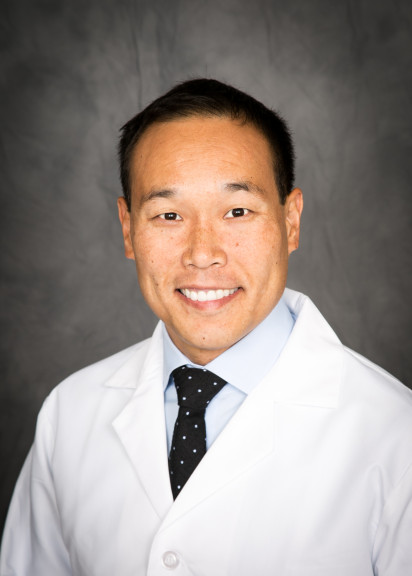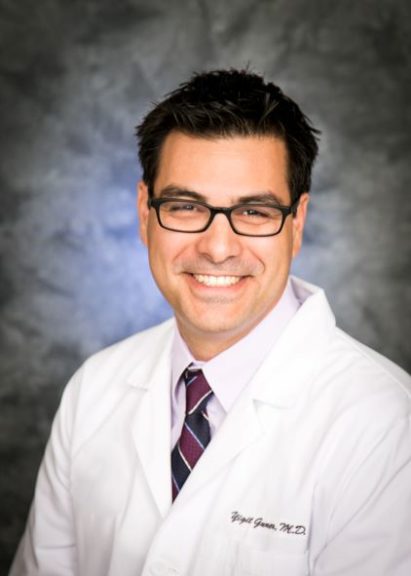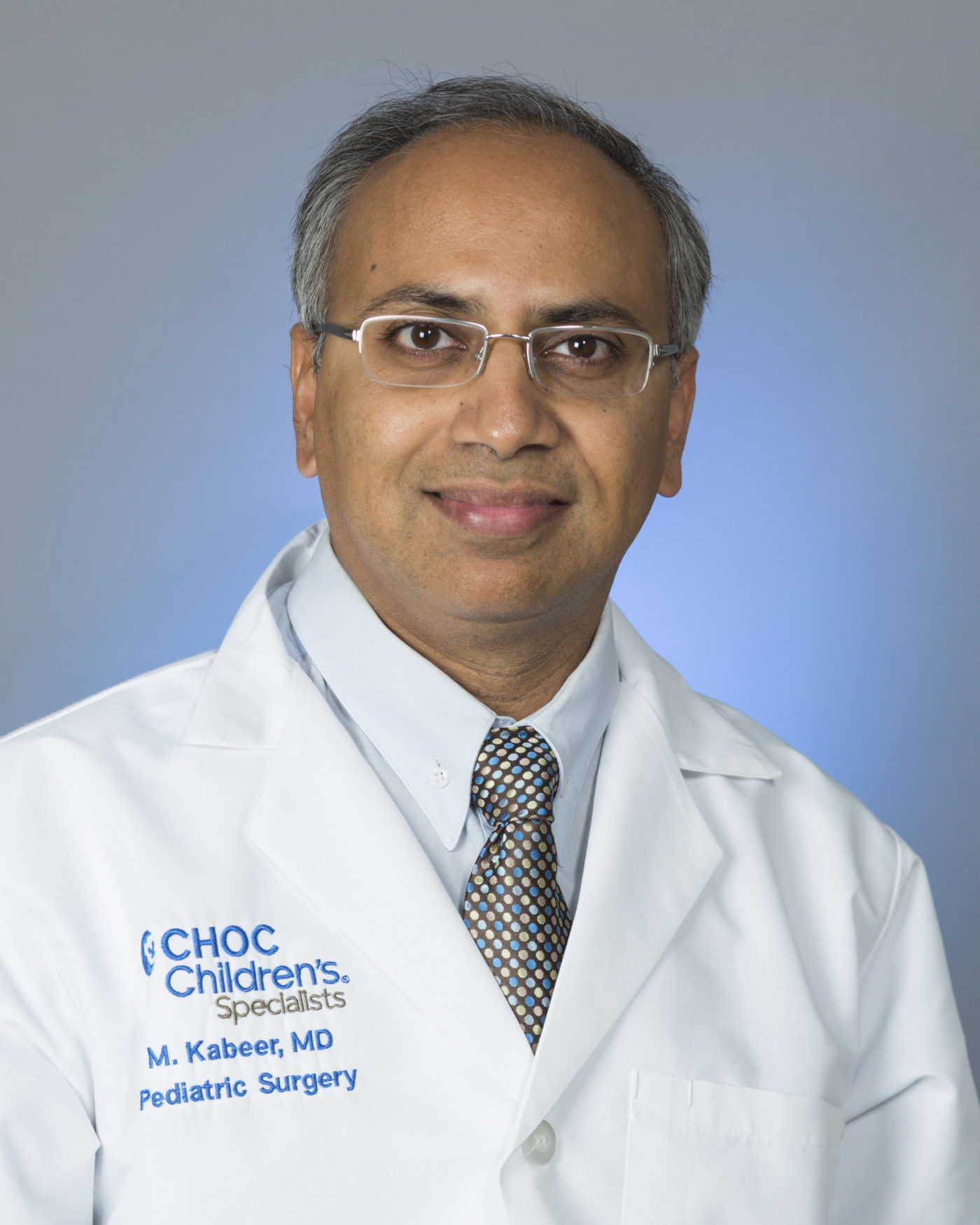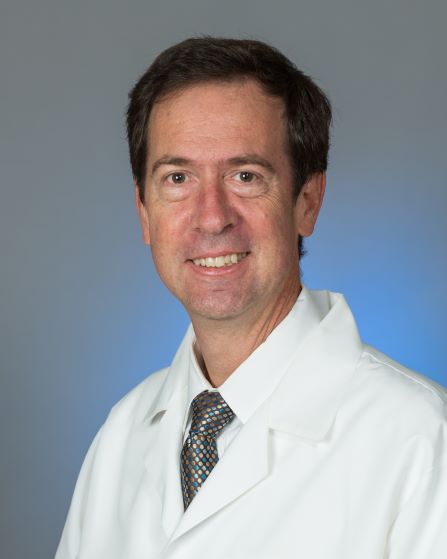CHOC surgeons are known for performing the latest procedures, no matter how complex, in areas including heart, trauma, gastrointestinal, urology and neurosurgery.
Outside the operating room, the seven physicians who make up CHOC’s pediatric general and thoracic surgery team also are excelling in another realm that is critical to CHOC’s mission of developing into one of the nation’s leading pediatric healthcare systems —
Research.
In the last five years, the surgery team has published some 35 papers, bolstered by recent new hires and a renewed commitment to dramatically transform CHOC from its roots as a community children’s hospital to an academic institution.
“It’s unprecedented in the history of pediatric surgery at CHOC – there’s no question about that,” pediatric surgeon Dr. Peter Yu says of the volume of research going on with his team.
“We are proud to be one of the most academically productive divisions at the hospital, and we have some impressive partners in other specialties here,” Dr. Yu says. He calls fellow pediatric surgeon Dr. Yigit S. Guner the leader behind the recent flurry of research.


“The number of papers that we’ve published in the last several years would be something to be proud of at any children’s health system, even the ones that have a longstanding academic tradition,” Dr. Yu says.
Dr. Yu also cites two more recent hires as critical players: John Schomberg, PhD, a biostatistician in nursing administration and trauma, and Elizabeth Wallace, MPH, a clinical research coordinator in the trauma department in Research Administration.
Schomberg has been instrumental in the team’s research efforts, providing statistical expertise to help investigators, both experienced and new to research, formulate and refine their research questions, Wallace says.
“The research team’s accomplishments are due in large part to the progressive leadership of CHOC executives and the CHOC Research Institute for prioritizing research and providing support needed to make these research endeavors possible,” she adds.
“Though we rarely think of it when we’re waiting for our child to be seen by their physician, ultimately research is the foundation for providing our pediatric patients with leading, innovative and excellent care,” Wallace says. “This group’s research has potential to inform best practices, policy and advocacy that addresses the needs of our community and to advance pediatric care on a more global level. I’m excited to see what the future brings.”
Dr. Guner says conducting research is a central part of his effort to care for children. “We always strive to provide great care, but research raises the bar on what can be done to help our patients,” he says.
Three general areas
The research being conducted by doctors in CHOC’s pediatric general and thoracic surgery division falls into three general categories: general pediatric surgery, trauma and extracorporeal membrane oxygenation (ECMO), a critical care technology that can be used to bypass a failing heart or lungs.
One trauma study, expected to be submitted for publication in February 2021, looked at legal intervention — any injury sustained from an encounter with a law enforcement officer. While studies have been conducted in adults, none have focused on the pediatric population. Legal intervention as cause of traumatic injury in the pediatric trauma population is infrequent yet reported.
Schomberg, Wallace, Dr. Guner and Dr. Yu were among the researchers who examined the National Trauma Data Bank (NTDB) for health disparities related to legal intervention in the pediatric population.
The team’s key finding: Legal intervention in children disproportionately affects the African American population.
Of the 1,069,609 pediatric trauma patients identified in the NTDB, according to an abstract of their paper, 622 sustained injuries involving legal intervention. When these patients were compared to the general pediatric NTDB, they were more likely to be older, male and test positive for illegal drugs or alcohol.
They were more likely to be African American (44.37% vs 17%), Latino (22.82% vs 15.10%), or Native American (0.96% vs 0.94%).
Mortality was higher in trauma involving legal intervention than in the general pediatric trauma population (4.82% vs 1.11%,), particularly in African Americans (63.33% vs 36.66%). Understanding the issue can hopefully point to more effective strategies to minimize harm while protecting public safety.
Variety of research papers
Several of the pediatric general and thoracic surgery division’s research papers concern congenital diaphragmatic hernias (CDH), a rare birth defect in which a hole in the diaphragm allows the intestines, stomach, liver and other abdominal organs to enter the chest, impairing typical lung development.
In another research project in collaboration with St. Louis Children’s Hospital-Washington University and The Children’s Hospital of Philadelphia, Dr. Yu looked at the incidence and length of stay for pediatric appendicitis during the initial days of the COVID-19 pandemic.
Dr. Yu is also currently working on a model to predict a rare traumatic injury referred to as blunt cerebrovascular injury (BCVI) and an interactive web app that would allow a trauma team to better understand their patient’s risk for BCVI.
Dr. Mustafa Kabeer, a CHOC pediatric surgeon, has published work in trauma and neonatology as well as basic science research on the stress response following splenectomy in mice. Dr. Kabeer’s most notable work includes research on the pioneering use of newborn umbilical cords to repair congenital birth defects such as gastroschisis.
Dr. David Gibbs, director of trauma services at CHOC, has been a staunch advocate for research, pushing CHOC to become the leading institution for pediatric trauma research in Orange County while pursuing a Pediatric Level 1 Trauma Center designation.


Dr. Gibbs’ published work includes developing prediction models in the trauma population to better understand prolonged hospital stays and return visits to the emergency department, revisiting the practice of X-rays post chest tube removal, and trauma case reports.
A true team effort
Dr. Yu says the surgeons in his division work as a team on many research projects.
“Just like you can be a great surgeon,” he explains, “if you go in to operate and you don’t have any anesthesiologists or a nurse or a scrub tech to hand you instruments, there’s only so much that you can do by yourself.”
Dr. Guner says he enjoys understanding as much as possible about the diseases that he treats, and that research is an ideal vehicle to deepen that understanding.
“I really respect people who come here to work and take care of patients – it’s a vital service that people need,” he says. “In addition, I’ve always felt that I really wanted to know about the diseases themselves. Conducting research allows me to contribute to my field and to society at large.”
Another important aspect of research, Dr. Guner adds, is that it helps residents.
“Part of their training is more than taking care of patients,” Dr. Guner explains. “Learning and research go hand in hand. Research makes residents more motivated to work with their mentors and gives them something to do in the early stages of their career by increasing the energy they devote to academia.”

Learn about pediatric research and clinical trials at CHOC




